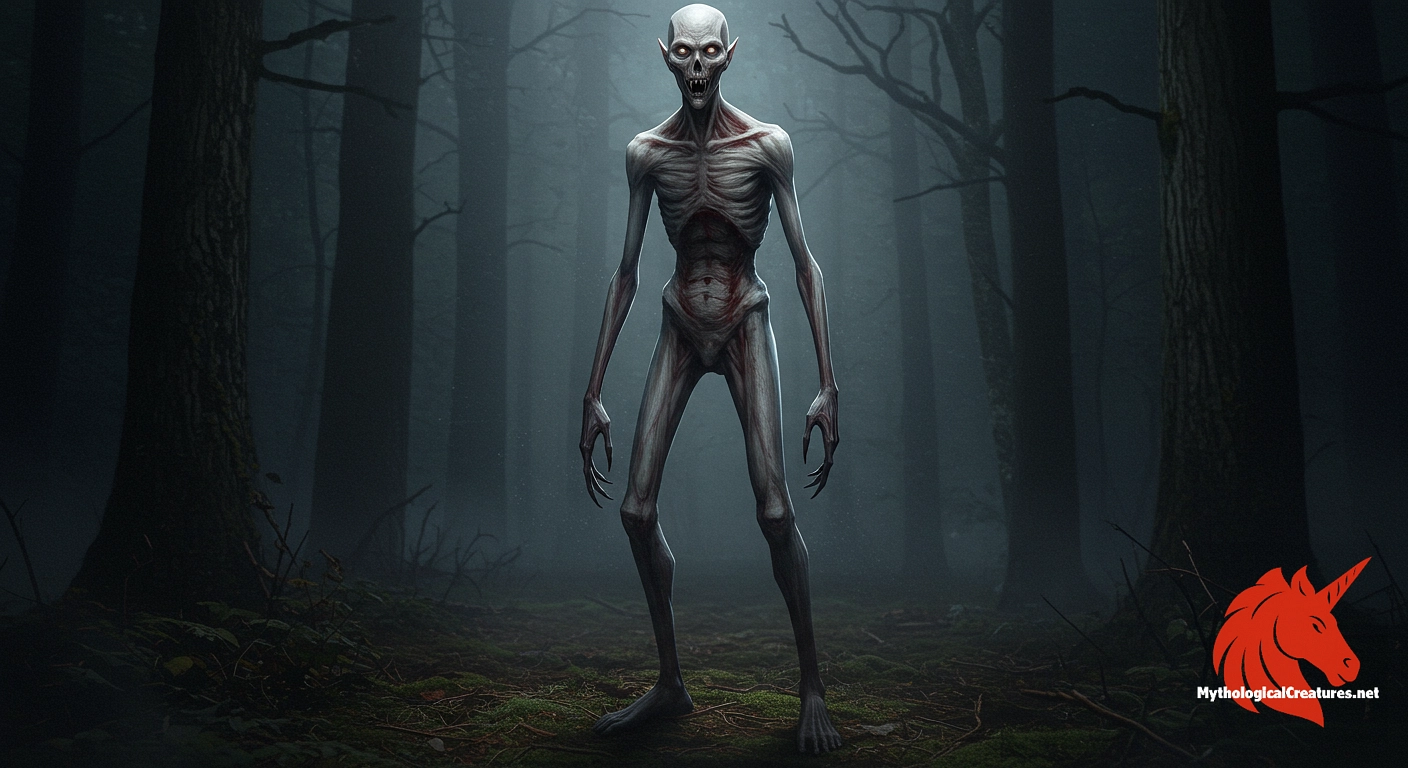Strigoi: Strigoi are undead, troubled spirits of Romanian folklore known for their supernatural abilities and malevolent nature.

Strigoi
Strigoi - Strigoi play a critical role in Romanian folklore as representations of the fear of death and the corruption of life, influencing modern vampire narratives.
Origins & First Encounters
The myth of the Strigoi has long captured the imagination of communities in Romania, where these troubled spirits are believed to rise from their graves. Their origins are woven into the fabric of ancient folklore, emerging from traditions that mixed respect for the dead with a deep-seated fear of the unknown. Stories passed down through generations depict the Strigoi as restless souls whose lives were marred by misfortune or sin. They are often portrayed as beings caught between life and death, bound to a curse that prevents them from finding eternal peace. The lore surrounding them reflects the cultural tensions between pre-modern beliefs and the influences of organised religion. Many narratives highlight their uncanny abilities, such as becoming invisible, shape-shifting into animals, and draining the vitality of their victims. The Strigoi serve as a potent reminder of the fragile boundary between existence and non-existence, intertwining tragedy with terror. Over time, their legacy has grown to symbolise the persistent human struggle to understand mortality and the forces that operate beyond the visible world.
Source Texts & Tale Variants
The primary sources for the legend of the Strigoi arise largely from oral traditions that have been meticulously preserved over centuries. Rural communities in the Carpathian region have long recounted tales of these disturbed spirits through whispered lore and communal rituals. Early accounts are found in local folklore collections, where the Strigoi are depicted in a mixture of awe and dread. Manuscripts and early parish records, though sparse, also hint at rituals undertaken to prevent these spirits from reanimating their decaying forms. Some accounts were later recorded by folklorists who gathered narratives from isolated villages. Variants of the story reveal subtle differences in the nature of their powers, the conditions of their resurrection, and the methods required to appease or exorcise them. Over time, travellers and writers contributed additional layers to the myth, blending local superstition with their own interpretations. The resulting corpus of literature, while fragmented, has provided a rich tapestry of detail that underscores the enduring impact of the Strigoi in cultural memory. In modern times, these historical narratives continue to serve as a foundation for both academic study and creative reinterpretation.
Form & Powers
The physical depictions of the Strigoi are as fluid as the myth itself, varying widely across different tellings. They are frequently portrayed as spectral figures whose appearance is marked by a pallid, almost luminescent complexion that belies their true nature. Many accounts describe them with eyes that burn with an eerie intensity, reflecting a haunted existence of eternal suffering. In some narratives, their facial expressions merge both horror and a hint of tragic allure, suggesting a life once marred by deep regret. The ability to transform is a hallmark of their description, with some versions asserting that they can assume the guise of animals such as wolves or birds. Observers have noted that when emerging from the darkness, their limbs appear unnaturally elongated, adding to their monstrous silhouette. Artistic renditions in old manuscripts and engravings capture them as figures partly shrouded in decay, yet imbued with a supernatural vigour. Each account seems to modify minor details in their anatomy, reinforcing the idea that the Strigoi exist beyond the bounds of conventional physical form. Their ever-changing visage continues to make them one of the most enigmatic and visually arresting figures in myth.
Regional Faces
Across different regions of Eastern Europe, the portrayal of the Strigoi adapts to local cultural nuances and traditions. In many rural areas of Romania, they are seen as cursed individuals whose failure to receive proper burial rites condemns them to eternal unrest. Variations in these legends sometimes transform the Strigoi into tragic figures — symbols of a destiny unjustly imposed by societal or spiritual failings. In regions such as Transylvania and Moldova, the stories incorporate elements of both pagan and Christian symbolism, which colour the way these spirits are understood. Local rituals to ward off or expel the Strigoi differ markedly from village to village, revealing a diverse regional approach to handling the supernatural. Some traditions even imbue them with a melancholy quality, portraying them as lost souls burdened by regret rather than mere harbingers of doom. This regional diversity highlights how folklore serves as a living tradition, continually reshaped by the fears and values of distinct communities. The multifaceted portrayals of the Strigoi underscore a shared cultural effort to explain and manage the mysteries of death and the afterlife.
Cultural Parallels
The Strigoi share many thematic traits with similar creatures found in other cultural traditions, offering fascinating insights into the universal nature of vampiric myths. Like the Slavic upir and the Greek vrykolakas, they embody the transgression of natural death, blurring the line between life and the undead. Their narrative, steeped in the themes of transformation and the siphoning of life, resonates with widely held fears across Europe. Comparable legends in other cultures often depict such entities as both monstrous predators and tragic figures, caught in an endless cycle of torment. The recurring motif of shape-shifting, which allows these beings to appear as animals or ghostly apparitions, appears in numerous mythologies. This cross-cultural connection emphasises the pervasive impact of concepts related to resurrection and blood-drinking in human storytelling. In multiple traditions, these creatures serve as allegories for the disruption of social and natural orders. The Strigoi, though deeply rooted in Romanian lore, thus form part of a broader mosaic of legends that explore the mystery and menace of the undead.
Legacy & Modern Evolution
The evolution of the Strigoi myth mirrors the shifting cultural and historical landscapes over the centuries. Initially depicted in oral traditions as ominous warnings against improper rites and moral decay, their legend gradually absorbed elements of both horror and sympathy. In medieval and early modern times, they symbolised the perils of defying natural and divine laws, a reflection of societal anxieties about death and the afterlife. The modern era has seen a transformation in their portrayal, with literature and cinema reimagining the Strigoi to explore complex themes such as identity, alienation, and the nature of evil. Their influence is palpable in the pervasive imagery of the sophisticated vampire archetype, notably in works that blend ancient lore with contemporary horror storytelling. With advancements in special effects and narrative techniques, the Strigoi have been revitalised as figures that are as captivating as they are chilling. Today, they appear in an array of media, from graphic novels and television series to immersive digital experiences, ensuring that their myth endures. As cultural symbols, the Strigoi continue to inspire both scholarly discussion and popular fascination, underscoring their timeless ability to embody humanity’s fears and fantasies about life, death, and what lies beyond.
Interesting Fact
An interesting observation is that the Strigoi, though feared as malevolent spirits, also reflect deep cultural anxieties about mortality and the blurred boundaries between life and death.
Quick Creature Info
Our Mythic Legendary Rating:

Habitat:
Supernatural Powers:
Physical Attributes:
Abilities:
Behavior:
Lore:
Related Creatures, Tales or Lore
- DDracula
- NNosferatu
- VVrykolakas
References
Discover Another Mythical Legend You May Not Have Heard Of?
Uncover the mysteries of ancient folklore and expand your knowledge of legendary beings from cultures around the world.
Dare to Meet the Kussie....
Mythical Disclaimer: The images and data on this site are derived from various historical and literary sources, but we have found that many myths often have multiple versions and interpretations across references, sometimes contradictory. As a result, these creature depictions are artistic interpretations—imaginative blends of folklore, legend, and a dash of AI guesswork. Because creature descriptions vary widely, our illustrations and accompanying information represent our best effort to honor mythology while bridging creative gaps. Enjoy these interpretations—just remember, we've done our best to respect the stories and validate available data, but in the realm of mythology, details often shift, imagination leads the way, and nothing is ever set in stone!
Curated by the Mythological Creatures Team (rev. May 2025)
